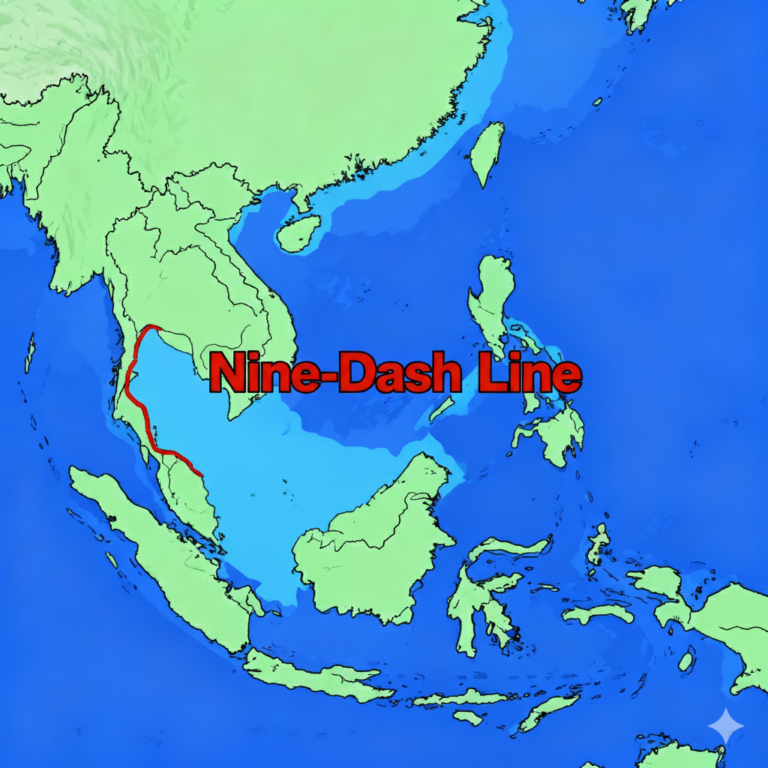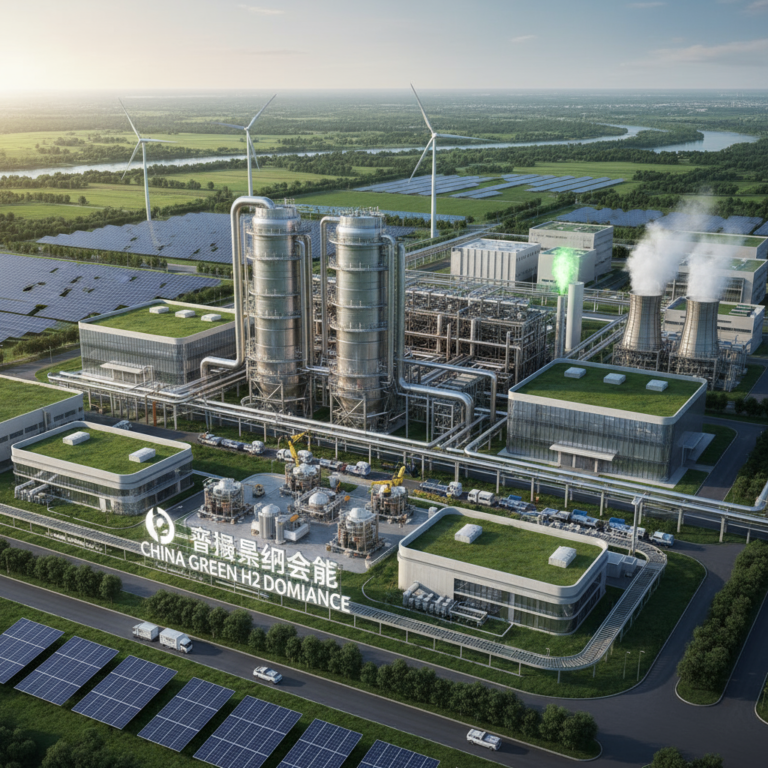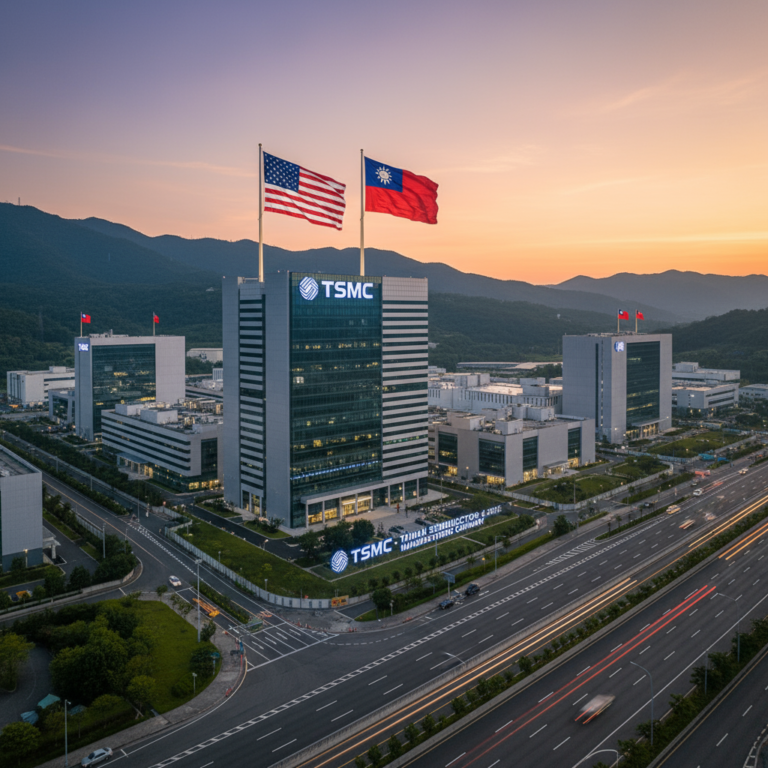Key Highlights
- Taiwan dominates global chip production with 60% of world semiconductors and 92% of most advanced chips, primarily through TSMC’s technological supremacy
- US demands rejected decisively as Taiwan refuses 50-50 semiconductor production split, with Vice Premier declaring “we will not agree to such conditions”
- TSMC’s massive US investment totaling $165 billion for Arizona facilities while maintaining majority production in Taiwan demonstrates balanced approach
- Silicon Shield strategy intact as Taiwan leverages semiconductor dominance for geopolitical protection, with industry contributing 15% to GDP
- Global supply chain at risk with US-Taiwan disagreement potentially disrupting $735 billion semiconductor industry and affecting AI, defense, automotive sectors
The Battle for Technological Supremacy
Semiconductors have emerged as the defining strategic resource of the 21st century, surpassing oil and gas in their geopolitical significance. These tiny electronic components form the backbone of modern electronics, defense systems, artificial intelligence, and economic infrastructure, making their control synonymous with national power and technological sovereignty. cnas
At the center of this global competition stands Taiwan, a small island nation that has achieved unprecedented dominance in semiconductor manufacturing. Taiwan Semiconductor Manufacturing Company (TSMC) alone produces over 50% of the world’s advanced semiconductors and 92% of the most cutting-edge chips, making it indispensable to global technology giants like Apple, Nvidia, and countless defense contractors.

The current dispute between the United States and Taiwan over semiconductor production represents more than a trade negotiation—it’s a fundamental struggle over technological sovereignty, supply chain control, and the future of global economic power. The US push for Taiwan to relocate approximately 60% of chip manufacturing to American shores has met fierce resistance from Taiwan, which views its semiconductor supremacy as both an economic lifeline and a “Silicon Shield” protecting against potential Chinese aggression.
Strategic Importance: Semiconductors as National Security Infrastructure
Military and Defense Applications
Semiconductors form the critical foundation of modern military systems, powering everything from missile guidance systems and communication satellites to drone operations and advanced radar. The complexity of modern warfare has made nations entirely dependent on these components for maintaining military effectiveness and technological superiority.
Defense-Critical Applications:
- Advanced missile guidance systems requiring precision navigation
- Satellite communication networks for secure military communications
- Drone and unmanned systems enabling remote warfare capabilities
- Cyber warfare infrastructure supporting digital defense and offense
- Electronic warfare systems for signal intelligence and disruption
India’s recognition of this strategic importance led to the acknowledgment that “India’s security rests on the foundation of semiconductors” given the country’s position as an emerging global power facing nuclear-armed revisionist neighbors.
Economic Security and Digital Infrastructure
Beyond military applications, semiconductors underpin all aspects of modern economic activity. From financial systems processing billions of transactions to healthcare devices saving lives and automotive systems enabling transportation, the absence of reliable semiconductor supply chains can paralyze entire economies.
Critical Economic Sectors:
- Financial services requiring secure processing for digital transactions
- Healthcare systems dependent on medical devices and diagnostic equipment
- Automotive industry increasingly reliant on electronic control systems
- Communication networks enabling global connectivity and commerce
- Energy infrastructure including smart grids and renewable energy systems
The COVID-19 pandemic demonstrated this vulnerability when semiconductor shortages disrupted global manufacturing, causing automotive production delays, electronics shortages, and highlighting the fragility of interconnected supply chains.
Technological Sovereignty and Strategic Autonomy
Dependence on foreign semiconductor supply chains creates unprecedented vulnerabilities to geopolitical tensions, export controls, and economic sanctions. The US-China technology war has demonstrated how semiconductor access can be weaponized, with companies like Huawei losing access to advanced chips through export controls targeting TSMC and other manufacturers.
This reality has driven major powers to pursue technological sovereignty through domestic manufacturing capabilities, recognizing that reliance on foreign suppliers represents a critical national security vulnerability in an increasingly contested geopolitical environment.
Taiwan’s Semiconductor Dominance: The Silicon Shield Strategy
TSMC’s Technological Leadership
Taiwan Semiconductor Manufacturing Company (TSMC) stands as the world’s largest dedicated semiconductor foundry, controlling 64% of the global contract manufacturing market as of 2024. Founded by Morris Chang in 1987, TSMC pioneered the pure-play foundry model, focusing exclusively on manufacturing chips designed by other companies.
TSMC’s Market Position:
- Over 50% of global advanced semiconductor production
- 70% of smartphone chipsets and 35% of automotive microcontrollers
- Client base including Apple, Nvidia, AMD, and major defense contractors
- Leading-edge process technology including sub-5nm manufacturing capabilities
- Revenue of $75.9 billion in 2023, making it Taiwan’s largest company
Taiwan’s Comprehensive Ecosystem
Taiwan’s semiconductor success stems from a complete industry ecosystem developed over five decades. This integrated supply chain includes:
Supply Chain Components:
- Silicon wafer suppliers providing raw materials
- Equipment manufacturers supplying fabrication tools
- Chemical suppliers for specialized manufacturing processes
- Assembly and testing facilities for final chip packaging
- Skilled workforce trained in semiconductor manufacturing
This ecosystem’s high density and integration creates efficiency advantages that are extremely difficult to replicate elsewhere, contributing to Taiwan’s sustained competitive advantage in the global market.
The Silicon Shield Concept
Taiwan has strategically positioned its semiconductor dominance as a “Silicon Shield”—using technological indispensability as geopolitical protection against potential Chinese military action. This strategy recognizes that Taiwan’s critical role in global supply chains makes any disruption economically catastrophic for the world economy.
Silicon Shield Components:
- Global dependence on Taiwan for critical chip supplies
- Economic deterrence through potential supply chain disruption
- International support motivated by technological dependencies
- Strategic ambiguity maintaining technological advantages
However, US officials like Commerce Secretary Howard Lutnick have challenged this concept, arguing that geographic concentration increases rather than decreases risks and that more balanced production would enhance Taiwan’s security.
US Pressure and Taiwan’s Resistance
US Strategic Demands
The Trump administration’s proposal for Taiwan to relocate 50% of US-bound semiconductor production to American facilities represents a fundamental challenge to Taiwan’s economic model. Commerce Secretary Howard Lutnick explicitly stated: “My objective is to get chip manufacturing significantly onshored—we need to make our own chips”.
US Rationale:
- Reducing dependence on geographically distant and potentially vulnerable supply chains
- Enhancing national security through domestic production capabilities
- Creating American jobs in high-value manufacturing sectors
- Mitigating risks from potential Taiwan Strait conflicts
The US has backed these demands with potential tariff threats, including possible 200-300% levies on semiconductor imports while currently maintaining 20% reciprocal tariffs on Taiwanese goods.
Taiwan’s Firm Rejection
Vice Premier Cheng Li-chiun delivered Taiwan’s unambiguous response: “We will not consent to producing 50% of our semiconductors within the U.S.” and emphasized that “Our negotiation team has never committed to a 50-50 split”.
Taiwan’s Counter-Arguments:
- Economic inefficiency of relocating integrated supply chains
- Massive costs and logistical challenges in duplicating Taiwan’s ecosystem
- Disruption of efficiency that makes Taiwan competitive globally
- Sovereignty concerns over external pressure on domestic industry decisions
- Preference for cooperation over forced relocation
Taiwan’s resistance reflects deeper concerns about maintaining its strategic technological advantages and economic sovereignty while managing relationships with both the US and China.
Global Implications and Supply Chain Reconfigurations
Impact on Global Chip Supply Stability
The US-Taiwan disagreement has profound implications for global semiconductor supply chain stability. Current global attempts to reduce Taiwan dependence include massive investment programs:
Major Rebalancing Efforts:
- US CHIPS Act: $450+ billion in private investment across 90+ projects
- European Union: $103+ billion commitment with Germany, France, Poland as key hubs
- South Korea: $470+ billion investment through 2047 in chip mega-clusters
- Japan: Robust public-private collaboration for capacity rebuilding
Despite these efforts, Taiwan maintains technological leadership in the most advanced processes, with competitors remaining several years behind Taiwan’s cutting-edge capabilities.
Strategic Triangle: US-China-Taiwan Dynamics
The semiconductor dispute occurs within the broader US-China-Taiwan strategic triangle with implications for Indo-Pacific security and global diplomacy. This three-way dynamic involves:
Complex Interdependencies:
- US reliance on Taiwan for advanced chips while competing with China
- Chinese dependence on Taiwan chips despite political tensions
- Taiwan’s balancing act between economic partnerships and political pressures
- Global economy exposure to Taiwan Strait stability
Recent US revocation of TSMC’s license to export advanced technology to China demonstrates how semiconductor policy has become weaponized in great power competition.
Opportunities for Emerging Players
The global supply chain reconfiguration creates opportunities for emerging semiconductor hubs like India to capitalize on reshoring and friendshoring trends. India’s semiconductor strategy includes:
India’s Semiconductor Initiatives:
- Incentives and tax credits for foreign semiconductor manufacturers
- Strategic partnerships with international players for technology transfer
- Infrastructure development to support manufacturing ecosystems
- Talent development leveraging India’s skilled workforce
However, experts note that India faces infrastructure challenges including power supply, logistics systems, and extended supply chain risks that must be addressed for successful semiconductor manufacturing development.
Policy Recommendations and Strategic Way Forward
Fostering Balanced US-Taiwan Cooperation
Rather than forced relocation, sustainable semiconductor cooperation requires mutually beneficial models that respect sovereignty and ecosystem integrity. Recommended approaches include:
Cooperative Frameworks:
- Joint research and development programs combining US innovation with Taiwan manufacturing
- Technology sharing agreements benefiting both parties’ competitive positions
- Graduated capacity expansion in the US without abandoning Taiwan’s advantages
- Risk-sharing mechanisms protecting against supply chain disruptions
Multilateral Supply Chain Diversification
Effective supply chain resilience requires multilateral efforts involving trusted partners rather than bilateral arrangements that may create new dependencies:
Diversification Strategies:
- Allied cooperation frameworks including Japan, South Korea, Europe, and emerging players
- Regional supply chain integration through Indo-Pacific partnerships
- Standardized security protocols for semiconductor manufacturing and transfer
- Investment coordination preventing duplicative and wasteful competition
Supporting Emerging Semiconductor Ecosystems
Developing alternative manufacturing hubs requires comprehensive ecosystem development rather than merely building fabrication facilities:
Ecosystem Requirements:
- Skilled workforce development through specialized education and training programs
- Supporting industry clusters including materials, equipment, and design services
- Research and development infrastructure connecting academia with industry
- Regulatory frameworks supporting innovation while maintaining security standards
Enhanced Diplomatic Engagement
Reducing techno-geopolitical tensions requires sustained diplomatic dialogue addressing legitimate security concerns while maintaining economic cooperation:
Diplomatic Priorities:
- Confidence-building measures reducing misunderstandings about technological intentions
- Transparency mechanisms for monitoring compliance with security-related restrictions
- Dispute resolution frameworks for addressing trade and technology conflicts
- Multilateral forums for discussing global semiconductor governance
Conclusion: Navigating the Semiconductor Crossroads
The US-Taiwan semiconductor dispute represents a defining moment in 21st-century geopolitics, where technological capabilities determine national power and supply chain control shapes international relations. Taiwan’s firm rejection of US demands for 50-50 production split reflects not merely economic calculations but fundamental questions about sovereignty, strategic autonomy, and the future of global technology governance.
Taiwan’s “Silicon Shield” strategy has successfully leveraged technological indispensability for geopolitical protection, but the sustainability of this approach depends on maintaining technological leadership while managing increasing pressure from major powers seeking supply chain diversification. The $165 billion TSMC investment in Arizona demonstrates Taiwan’s willingness to cooperate while preserving its core competitive advantages.
The global semiconductor industry’s future will be shaped by how major powers navigate the tension between economic efficiency and national security, technological cooperation and strategic competition. The failure to reach mutually acceptable arrangements risks fragmenting global supply chains, reducing innovation efficiency, and increasing costs for consumers and businesses worldwide.
For emerging players like India, the current reconfiguration presents unprecedented opportunities to become major semiconductor hubs, but success requires comprehensive ecosystem development rather than merely building manufacturing capacity. The winners in this technological competition will be those who can balance domestic capabilities with international cooperation, security concerns with economic efficiency, and national interests with global stability.
The semiconductor industry’s evolution from a globalized, efficiency-driven sector to a geopolitically contested domain reflects broader trends in techno-economic nationalism and strategic competition between great powers. How successfully the international community navigates these challenges will determine whether semiconductors become a source of enhanced global cooperation or deepening technological fragmentation.









+ There are no comments
Add yours